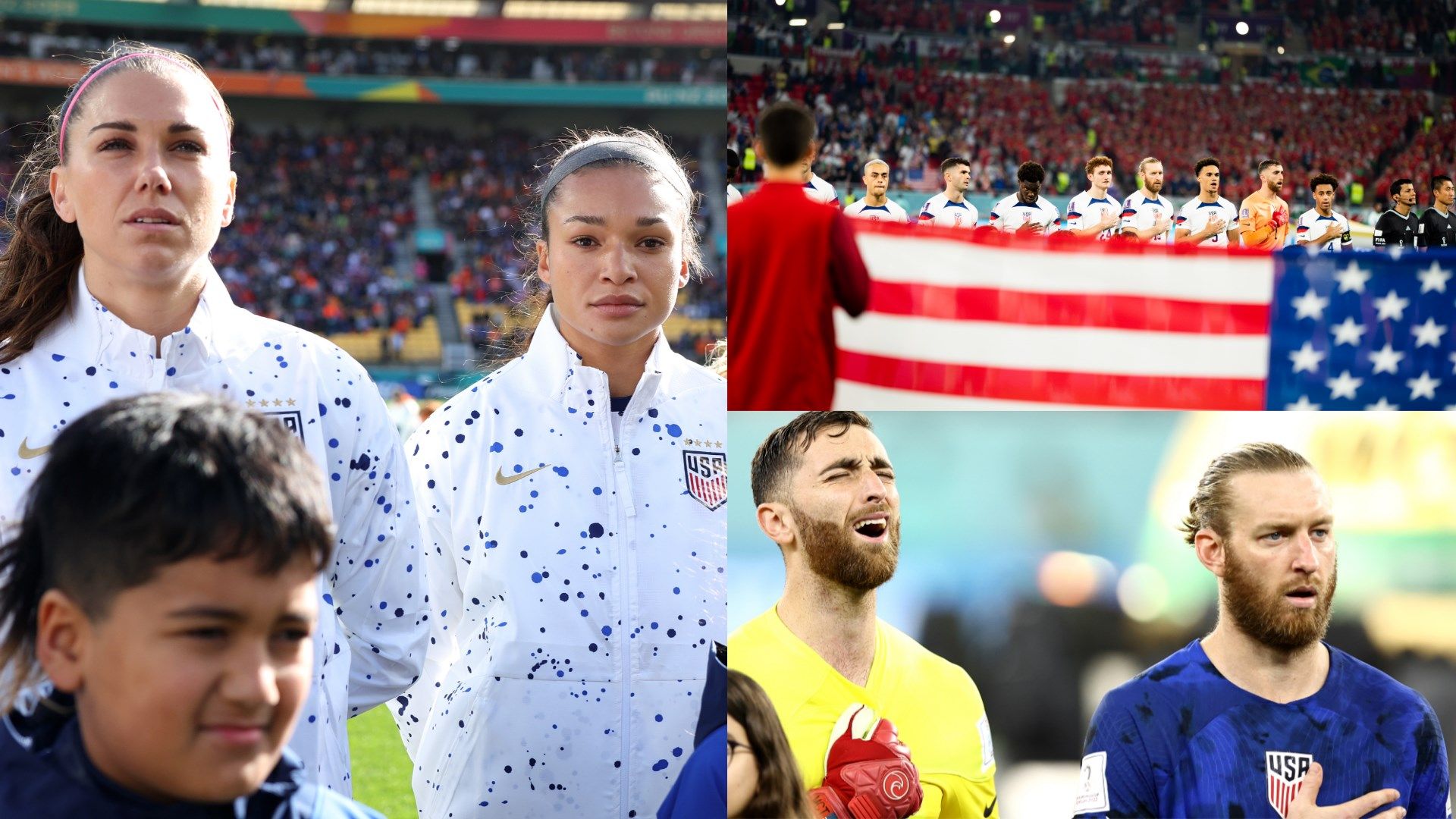Perhaps more so than many other countries, the national anthem has long been a pre-game staple in American sports.
Virtually every sporting event in the United States is kick-started by the playing of the Star-Spangled Banner in a ceremony that has become a point of contention for some sport stars and fans in recent years. The U.S. men's national team and U.S. women's national team are no different, with international soccer games traditionally opened with anthems.
Here, GOAL takes a look at how the national anthem came to be and its history with the sport of soccer.
American national anthem: Star-Spangled Banner lyrics
O say can you see, by the dawn's early light,
What so proudly we hailed at the twilight's last gleaming,
Whose broad stripes and bright stars through the perilous fight,
O'er the ramparts we watched, were so gallantly streaming?
And the rocket's red glare, the bombs bursting in air,
Gave proof through the night that our flag was still there;
O say does that star-spangled banner yet wave
O'er the land of the free and the home of the brave.
How did the Star-Spangled Banner become the American national anthem?
Officially named as the national anthem of the United States of America in 1931, the lyrics to the Star-Spangled Banner were originally written on September 14, 1814, by Francis Scott Key.
Key, a lawyer and poet, penned what would eventually become the Star-Spangled Banner after witnessing the bombardment of Fort McHenry by British ships of the Royal Navy during the War of 1812.
In particular, the song was inspired by the sight of the American flag flying high above the battlefield following a U.S. victory.
Originally a poem titled the Defence of Fort M'Henry, the words were eventually put to the music behind To Anacreon in Heaven, a popular song at the time.
It soon emerged as a song to signify patriotism, although the original lyrics have been shortened with only the first of the piece's four original stanzas commonly sung today.
Prior to the Star-Spangled Banner, the U.S. had several other unofficial national anthems, including Hail, Columbia, My Country, 'Tis of Thee and America the Beautiful.
Why is the national anthem played before sporting events in the U.S.?
The playing of the Star-Spangled Banner before sporting events began all the way back in the 1890s, as the song was played occasionally before professional baseball games.
It was largely saved for big games, as teams couldn't afford to hire bands to regularly play the anthem, but, as the 20th century progressed, the introduction of sound systems to stadiums allowed the anthem to be played more regularly.
With a rise in patriotism following World War II, the anthem became a regular part of American society, played at sporting events, theatres and in schools, among other places.
It has been a mainstay of American sports ever since, with the pre-game ceremony becoming a staple that often features big-name celebrities and musicians performing the song.
When it comes to soccer, the anthem is played before every MLS and NWSL game and even before international friendlies featuring non-American clubs.
The song is also obviously played before every U.S. men's and women's national team game, much like with other national teams all over the world.
When did athletes start protesting the national anthem?
The pre-game national anthem ceremony in sports became a topical issue in August 2016, when NFL quarterback Colin Kaepernick began to take a knee during the song to protest racism and police brutality.
His display quickly spread across sports, with Megan Rapinoe becoming the first USWNT player to kneel during the anthem before an international fixture in 2016.
At the time, U.S. Soccer had a policy that required athletes to stand respectfully during the anthem, but that policy was called into question following the killing of George Floyd in 2020.
Floyd's death sparked protests all over the world, with Kaepernick's original display once again coming into focus.
.jpg?format=pjpg&auto=webp&width=3840&quality=60) Getty
GettyAs a result, players across sports began to take a knee during the anthem as a sign of unity in the fight against police brutality and racism. The display also extended far outside of America's borders, with taking a knee also emerging across Europe.
U.S. Soccer went on to repeal its anthem policy in June, angering then-President Donald Trump in the process. In the immediate aftermath, the USWNT, in particular, saw a majority of their players opt to kneel, with a few usually standing alongside their teammates.
However, in February 2021, the entire USWNT starting XI opted to stand for the anthem, with Crystal Dunn saying that the group had decided it was now time for a different response: action.
"Those that were collectively kneeling felt like we were kneeling to bring about attention to police brutality and systemic racism, and I think we decided that moving forward we no longer feel the need to kneel because we are doing the work behind the scenes," Dunn said.
"We never felt we were going to kneel forever, so there was always going to be a time that we felt it was time to stand.
"I think we're all proud that we are doing the work behind the scenes and it was just a game that we felt we were ready to move into the next phase and just continuously fight for change."
The anthem issue came into focus again in 2023 at the Women's World Cup in Australia and New Zealand, when the USWNT were criticised for the fact that only a handful of their players were seen to sing the anthem ahead of games against Vietnam and the Netherlands.
San Diego Wave star Naomi Girma responded to the criticism by saying: "Ultimately, every player has the choice, that's all I have to say."
.jpg?auto=webp&format=pjpg&width=3840&quality=60)



